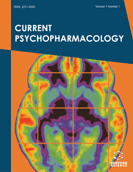Abstract
Background: There are no published guidelines for the pharmacological management of insomnia in the pediatric population, and there are no Food and Drug Administration (FDA) approved medications for this purpose. Yet, many classes of psychopharmacological medications are used off-label in children and adolescents.
Objective: To describe the side effects of different classes of medications used as sleep aids in the pediatric population, and management of those side effects.
Method: Literature review and summary of existing evidence.
Results: Several medications used as pediatric sleep aids have side effects that range from inconvenient constitutional symptoms, major systemic cardiac, endocrinological and neurological symptoms to potentially fatal syndromes.
Conclusion: Clinicians need to be vigilant for adverse effects of these medications and to implement strategies to mitigate some of the effects, while educating patients and families about the pros and cons of medication use for insomnia.
Keywords: Insomnia, children and adolescents, psychopharmacology, side effects, medications, endocrinological and neurological symptoms.
Graphical Abstract
Current Psychopharmacology
Title:Management of Adverse Effects of Sleep Medications in Pediatrics
Volume: 7
Author(s): Neelkamal Soares*Shibani Kanungo
Affiliation:
- Department of Pediatric and Adolescent Medicine, Western Michigan University Homer Stryker School of Medicine, Kalamazoo, MI, 49008,United States
Keywords: Insomnia, children and adolescents, psychopharmacology, side effects, medications, endocrinological and neurological symptoms.
Abstract: Background: There are no published guidelines for the pharmacological management of insomnia in the pediatric population, and there are no Food and Drug Administration (FDA) approved medications for this purpose. Yet, many classes of psychopharmacological medications are used off-label in children and adolescents.
Objective: To describe the side effects of different classes of medications used as sleep aids in the pediatric population, and management of those side effects.
Method: Literature review and summary of existing evidence.
Results: Several medications used as pediatric sleep aids have side effects that range from inconvenient constitutional symptoms, major systemic cardiac, endocrinological and neurological symptoms to potentially fatal syndromes.
Conclusion: Clinicians need to be vigilant for adverse effects of these medications and to implement strategies to mitigate some of the effects, while educating patients and families about the pros and cons of medication use for insomnia.
Export Options
About this article
Cite this article as:
Soares Neelkamal *, Kanungo Shibani , Management of Adverse Effects of Sleep Medications in Pediatrics, Current Psychopharmacology 2018; 7 (1) . https://dx.doi.org/10.2174/2211556007666180131153440
| DOI https://dx.doi.org/10.2174/2211556007666180131153440 |
Print ISSN 2211-5560 |
| Publisher Name Bentham Science Publisher |
Online ISSN 2211-5579 |
 41
41 11
11 1
1
- Author Guidelines
- Bentham Author Support Services (BASS)
- Graphical Abstracts
- Fabricating and Stating False Information
- Research Misconduct
- Post Publication Discussions and Corrections
- Publishing Ethics and Rectitude
- Increase Visibility of Your Article
- Archiving Policies
- Peer Review Workflow
- Order Your Article Before Print
- Promote Your Article
- Manuscript Transfer Facility
- Editorial Policies
- Allegations from Whistleblowers
- Announcements
Related Articles
-
Dreams and Psychedelics: Neurophenomenological Comparison and Therapeutic Implications
Current Neuropharmacology Nano-Scale Gene Delivery Systems: Current Technology, Obstacles, and Future Directions
Current Medicinal Chemistry Current Strategies and Future Perspective for the Effective Treatment of Diabetic Retinopathy
Current Drug Therapy Tolerance in Intestinal Inflammation and Cancer
Current Drug Targets Current and Future Therapeutic Strategies for Parkinsons Disease
Current Pharmaceutical Design Phenolic Compounds from Plants as Nitric Oxide Production Inhibitors
Current Medicinal Chemistry Design and Synthesis of Dopaminergic Agonists
Current Medicinal Chemistry Adrenomedullin Function in Vascular Endothelial Cells: Insights from Genetic Mouse Models
Current Hypertension Reviews Implications of microRNAs in the Pathogenesis of Atherosclerosis and Prospects for Therapy
Current Drug Targets Antimalarial Drugs and their Useful Therapeutic Lives: Rational Drug Design Lessons from Pleiotropic Action of Quinolines and Artemisinins
Current Drug Discovery Technologies Selenite-induced Expression of a Caenorhabditis elegans Pro-aging Factor and Ortholog of Human Selenium-binding Protein 1
Current Nutraceuticals Effects of Therapeutic Hypothermia on the Glial Proteome and Phenotype
Current Protein & Peptide Science Fibroblast Growth Factors/Fibroblast Growth Factor Receptors as Targets for the Development of Anti-Angiogenesis Strategies
Current Pharmaceutical Design Optical Coherence Tomography Detection of Neurodegeneration in Multiple Sclerosis
CNS & Neurological Disorders - Drug Targets Synthesis of Quinazolines as Tyrosine Kinase Inhibitors
Anti-Cancer Agents in Medicinal Chemistry Regulation of Postsynaptic Stability by the L-type Calcium Channel Ca<sub>V</sub>1.3 and its Interaction with PDZ Proteins
Current Molecular Pharmacology Mosquito and Tick-borne Illnesses in the United States. Guidelines for the Recognition and Empiric Treatment of Zoonotic Diseases in the Wilderness.
Infectious Disorders - Drug Targets Phosphodiesterase Inhibitors as a Target for Cognition Enhancement in Aging and Alzheimer’s Disease: A Translational Overview
Current Pharmaceutical Design Mitochondrial Drug Targets in Apicomplexan Parasites
Current Drug Targets Editorial (Thematic Issue: Neuroinflammation a Common Link in Neurodegenerative Neurological and Psychiatric Disorders)
Current Pharmaceutical Design


























